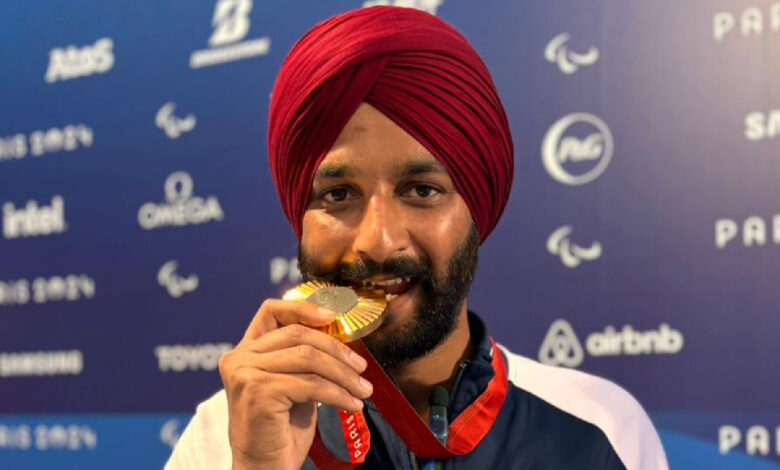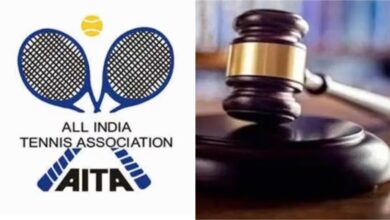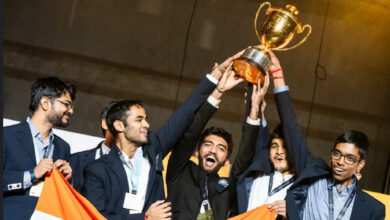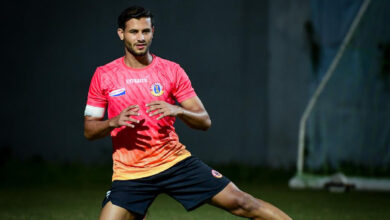Paralympics champion Harvinder Singh taking aim at able-bodied archery events | Sport-others News

Harvinder Singh’s immediate ambitions are modest – making the state squad first, and helping the team win the next Recurve Archery Nationals. But he is quietly looking forward to taking on men whom he calls ‘Olympics ke Ustaad.’ Masters of Olympics.The 33-year-old Paris Paralympics Recurve champion, with impairments weakening both feet, is aiming at a fairly difficult target – competition in the able-bodied category, which makes his pursuit unique.
The Kaithal (Haryana) archer, has been shooting over the same 70 metre dance (as the able-bodied) with some brilliance in the past few months – he nailed five 10s, on clutch shots (needing 10-to-win), to claim the Paralympics gold. Same arrows, same bow, same match format, same target. Getting into the Open category mix might simply be about adapting to the prospect of competing against men with nothing holding them back in fitness – all standing still. But Harvinder is keen to back himself.
“I’m aware that there’s no dearth of excellent archers in India amongst the able-bodied and for 12 years since I started shooting, I’ve seen how good they are. But I would like to try out in able- bodied events, knowing I can produce 10s at decisive moments. Obviously, the technique doesn’t work everytime or I’d have never lost! But I have the confidence to pull off 10s in big competitions with a medal on the line,” Harvinder says.
The Kaithal (Haryana) archer, has been shooting over the same 70 metre dance (as the able-bodied) with some brilliance in the past few months – he nailed five 10s, on clutch shots (needing 10-to-win), to claim the Paralympics gold. (Special Arrangement)
The first thing he did towards that endeavour was to buy himself an electric scooter – to avoid having to walk 70 metres to fetch the arrows stabbed into targets during practice. “My restriction is that I can’t lift weights, walk for too long without getting tired, run for fitness, and have balance issues in both legs, so I need stronger recovery techniques after standing for 2-3 hours,” Harvinder says. The electric scooter helps.
“But in a 3-arrow set, I can hit a 10 on the final arrow,” he stresses. “On the whole, amongst Indians in both para and Olympics, that last arrow is where we fall short. But I can hit 10, I trust my technique and confidence.”
At age 12, Harvinder recalls being assertive on a big decision for the first time in his life. “My parents had taken me to all possible doctors to undo the damage of a wrong injection, but finally a Delhi doctor spelt it out: ‘Dhoke mein nahi rakhna aapko, issey theek nai hoga.’ (Don’t want to give you false hope, no treatment can undo the damage),” recalls the archer, also pursuing a PhD in Punjab’s labour reforms.
He encountered the first googly of his career when he found the Compound bow irksome. “I suffered from Compound archery’s face-phobia or target-panic, where archers misfire early and botch a shot because of the bow design. Recurve was easier for me, which is rare,” he recalls of being encouraged coach Jiwanjyot Singh Teja, who set the Recurve mark for him.
Learning from setback
His 10-to-win golden form that fetched the Paralympics top spot, though, came after heartbreak at the Tokyo Games that he remembers vividly. “In the Tokyo semifinals, I’d allowed my mind to race ahead of me, needing to shoot 8 against a Korean in the 4th set. In my head, I’d already hit 8 or above, and imagined ki khushi mein jhoomunga. It missed the 8. Main ekdum se hil gaya. (I thought I’d jump with joy, but when I missed 8, I was shaken),” he recalls.
It’s then that he started exercising complete control over his thoughts. “I don’t allow any thoughts when shooting, neither negative nor positive. We get 10 seconds to load an arrow, I actually allow 3 seconds to pass, so there’s no free time in the end for thoughts to enter,” Harvinder explains his clockwork methods.
He has spent many evenings watching his Paris clips with wife Manpreet. “What we noticed was how there was zero expression on my face even after I stepped back after shooting a 10 or when the judge showed up. My policy is ‘no expression till the match is over’. Getting to that focus level is the key,” he says. “We archers get happy after a 10 and the next shot goes bad. I consciously kept my head empty of thoughts till the match finished.”
India’s long l of 4th-place finishes and crunch-meltdowns in archery was a longstanding jinx that Harvinder ended. But it came with immense simulations at the makeshift shooting lane on his farm. He routinely blared engaging podcasts, interesting interviews, crowd applause tapes to test if he could still shoot 10 when dracted loud noises.
His big event routine, though, involved starting a novel a week earlier, to plunge into that fictional world. “Before the Paralympics, I started ‘Raat Baaki hai’ Punjabi writer Jaswant Singh Kanwal. You get attached to a story through the event, and stay in that calm zone,” he says.
Not being able to run for fitness means he can’t simulate an increased heart rate before shooting. “I need to work more on shooting when I’m shivering with pressure, but controlling the heart rate needs running which my disability doesn’t allow. I’m trying alternatives in gyms,” he says.
Harvinder maintains though that he remains one of India’s best duelling match shooters. “I have cracked that exact microsecond in between two breaths when it’s best to shoot even under intense pressure. My qualification scores aren’t high, so I need to work on that to get into able-bodied teams. But I am a very good match shooter,” he says.
He has the Para Nationals coming up in 2-3 months, but it’s in the able-bodied Open event that Harvinder Singh will test his mettle, wondering if his 10-to-win technique withstands the pressure. With his clutch temperament, it’s a crossover India will hope works.







